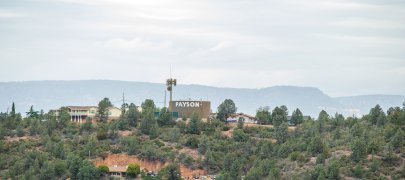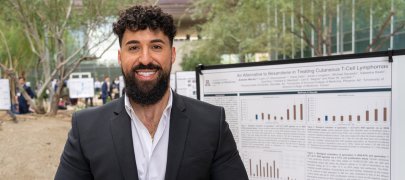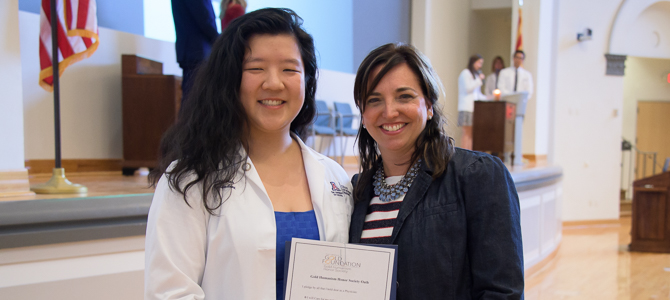
Future Graduate, Sophie Sun, Chronicles Her Journey to Match Day

The Class of 2018 will find out at exactly 9:00 a.m. March 16 the next stop on their journey in medicine. Match Day will be celebrated this year at the University of Arizona College of Medicine – Phoenix in the grand canyon between the Health Sciences Education Building and the Biomedical Sciences Partnership Building.
We asked fourth-year student Sophie Sun to chronicle her experience with residency interviews, which culminates in medical students finding out where they will spend the next three to seven years in residency.
Here's Sophie's story:
Gearing Up for the Interview Trail
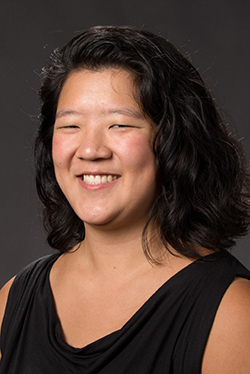
In our past lives, we all interviewed for college and medical school, and many of us interviewed for jobs, volunteer positions and other programs. Thinking about these other interviews, it seems especially stressful that the typical residency applicant will go on 10-15 interviews (perhaps more for those who are couples matching or going into especially competitive fields) without any offer until Match. How does someone prepare for this time, so full of unknowns? In short, I would say trust your instincts. In long, I would say a little more:
Picking a Specialty
A few lucky people have known their desired specialty since the beginning of medical school, and their rotation experiences have only confirmed their intentions. The rest of us, however, were either completely uncertain or have since changed our minds. So, what were we looking for in each of our third-year and early fourth-year rotations? There are students who love procedures and some who do not. Some of us love continuity of care, and others prefer acuity. Still others enjoy the cerebral part of medicine more than the direct patient care aspect. For me, I realized that I would enjoy the breadth and depth of training that a combined internal medicine and pediatrics (Med-Peds) program could provide while keeping me out of the operating room.
Other factors that we consider, sometimes more strongly than the type of medicine, are the culture and lifestyle associated with each specialty. Superficially, we expect certain fields to be more or less likely to console patients, teach students, encourage competition, respect sleep schedules, and so on. Altogether, these are simply different ways of expressing our shared values: putting patients first, honoring our profession, and supporting our current and future colleagues.
Paperwork
The beginning of fourth-year required more strategy than previous years. We planned our first few rotations to obtain the best letters of recommendation, with those from the desired specialty, sub-internships and critical care the highest priority. On these rotations, we rose to the daily task of acting like an intern. We calculated how many applications we could afford, or needed to afford with regards to likelihood of matching. We had to decide what was more important to us in a program: the culture, the location, the reputation? We filled out those boxes on Electronic Residency Applications to detail our every move since the first day of medical school. We crafted a narrative from our clinical, volunteer, research and educational experiences to prove why we chose the specialty we did. Then we clicked a box to transfer a small fortune to the AAMC.
And then we waited.
The Waiting Game, Part One
The number of residency applications has gone up over the years. True, there are more medical students now, and some specialties have become more competitive. However, in many cases, it seems that each student is applying to more programs. Ideally, we should apply to a reasonable number of residencies that best fit us with only a few "reach" and "safety" options. In reality, we do not know that much about each program's criteria, and our anxiety over the possibility of not matching leads many of us to excess.
Here was where we played the impossible game of trying to optimize the interview schedule. With the exception of a few specialties, interview invites came sporadically by email, which often required us to frantically step away from whatever we were doing on rotation to schedule a date as quickly as possible. Some residency programs sent invites within a few days of the due date in September, while others waited a month or two. As other students started canceling, you could be waitlisted or invited to additional interviews as late as January. We tried to schedule our most desired programs in the middle of the interview season, which runs from October to January, so we would be well rehearsed without being fatigued, and we tried to arrange interviews in the same geographic region.
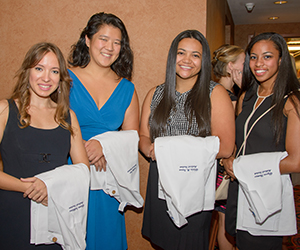
The Jet Set Life
Life, however, gets in the way of the best laid plans, and sometimes we would make travel changes within days of a new interview offer. When convenient dates were not available, some of my classmates flew back and forth from coast to coast to attend consecutive interviews. My personal advice for the new frequent flyer would be to apply for TSA Pre-Check so as not to waste any time at the airport, especially if you have to make a flight that is tightly scheduled after an interview. Make sure to sign up for frequent traveler discounts. Soft luggage fits into overhead compartments easier than rolling luggage. Rental cars are handy, but be careful in winter if you are not used to driving in snow. Trains and public transportation are useful in some cities. If you happen to go to Columbus, Ohio, you really must try Jeni's Splendid Ice Creams.
Though the travel was exhausting, it was motivating for me to find cities where the Med-Peds presence is strong. The occasional odd interview question did come up ("If you could pick an animal to be president, what would you pick and why?"), but the rest were generic, asking me to explain my story and what I wanted from residency. While other specialties may differ (I heard of one surgical program that asked interviewees to play the game “Operation” while answering questions), the purpose is to see whether you and that program would fit well together. I strongly considered location and the apparent quality of each program, but for much of my rank list, I based it on my impression of the people. Did the residents seem to care about improving patient care, serving the community or teaching medical students? Did they seem to have a good sense of humor and enjoy hanging out together?
To Thank or Not to Thank?
Fortunately, most Med-Peds programs abide by strict post-interview communication policies, where they made it clear that they would not contact us after the interview day and that any further communication we had with them would have no bearing on our application. For me, this is the best scenario. As nice as it would be to have an earlier guarantee, communications from some programs have been notoriously misleading. Being told that you are "ranked to match" does not mean, for instance, that you are in the top four spots for a four-position residency. Their “number needed to rank” could be a ratio of ten-to-one or higher, meaning they would need to rank at least 40 applicants to fill four positions. Regardless of the messages you may receive, you should always rank based on your own preferences. I ordered my programs as I went along the interview trail and then entered them all in one sitting. Some of my classmates continued to tweak their rank order over the weeks, but eventually, we all had to certify our list for the last time on Feb. 21.
And now, we wait. Again.
The Waiting Game, Part Two
At this point, we have no idea where we will be in a few months. Some of our medical student colleagues have already received their matches: San Francisco Match for ophthalmology and plastic surgery, American Urological Association for urology, the military match and the American Osteopathic Association for DO matches. The rest of us have to wait until March 16 for our results. After months of strategizing, marketing ourselves, networking with strangers, making new friends and living like a pack mule, we can do nothing now but wait.
Regardless of what the future holds, I am happy and confident about my chosen specialty, especially after meeting more individuals from the Med-Peds community. No matter where I end up, I know that I will receive the training and support I need to become the kind of physician I want to be.
— Sophie Sun, MS4
Media Contact:
Teresa Joseph
Phone: 602-827-2657
About the College
Founded in 2007, the University of Arizona College of Medicine – Phoenix inspires and trains exemplary physicians, scientists and leaders to optimize health and health care in Arizona and beyond. By cultivating collaborative research locally and globally, the college accelerates discovery in a number of critical areas — including cancer, stroke, traumatic brain injury and cardiovascular disease. Championed as a student-centric campus, the college has graduated more than 800 physicians, all of whom received exceptional training from nine clinical partners and more than 2,700 diverse faculty members. As the anchor to the Phoenix Bioscience Core, which is projected to have an economic impact of $3.1 billion by 2025, the college prides itself on engaging with the community, fostering education, inclusion, access and advocacy.

